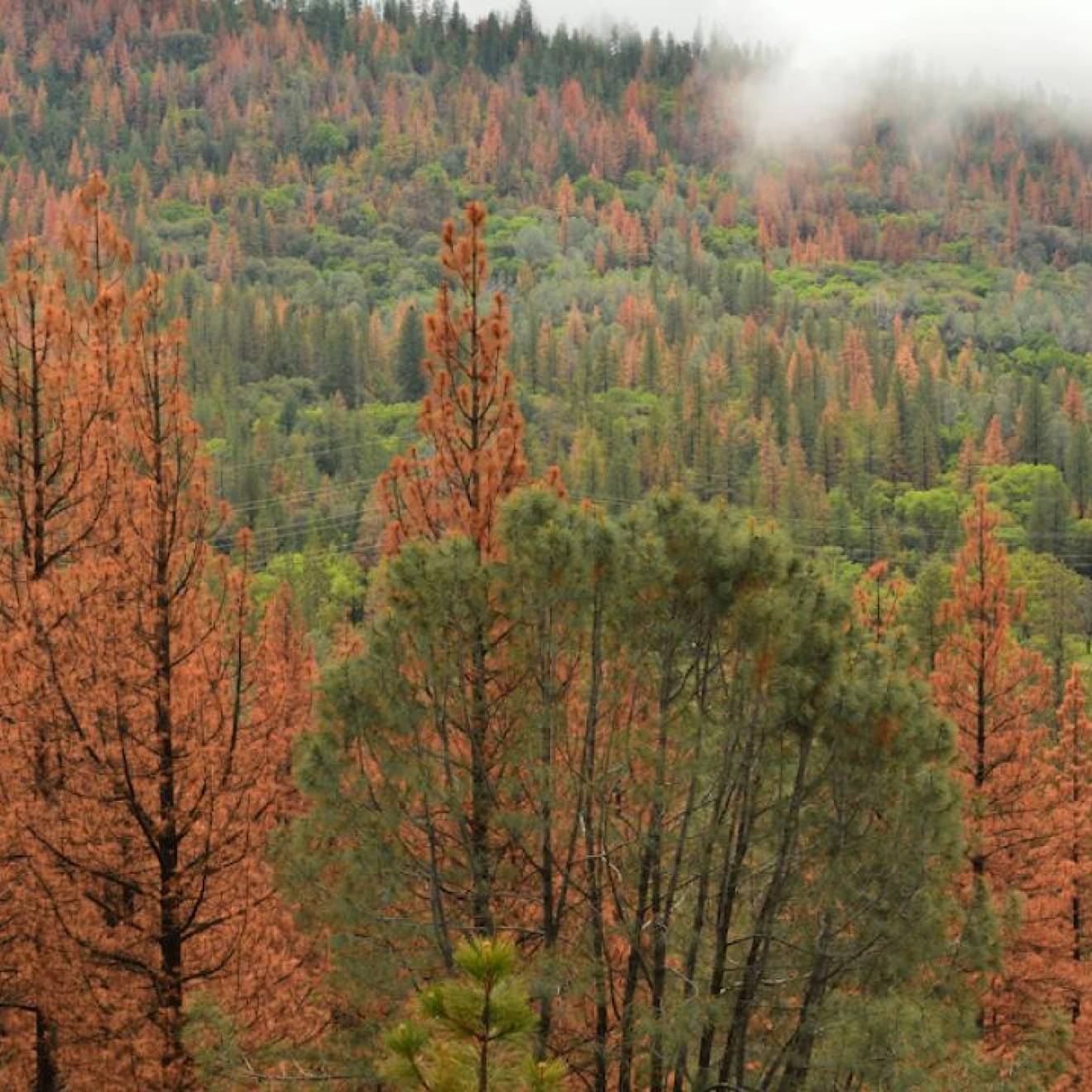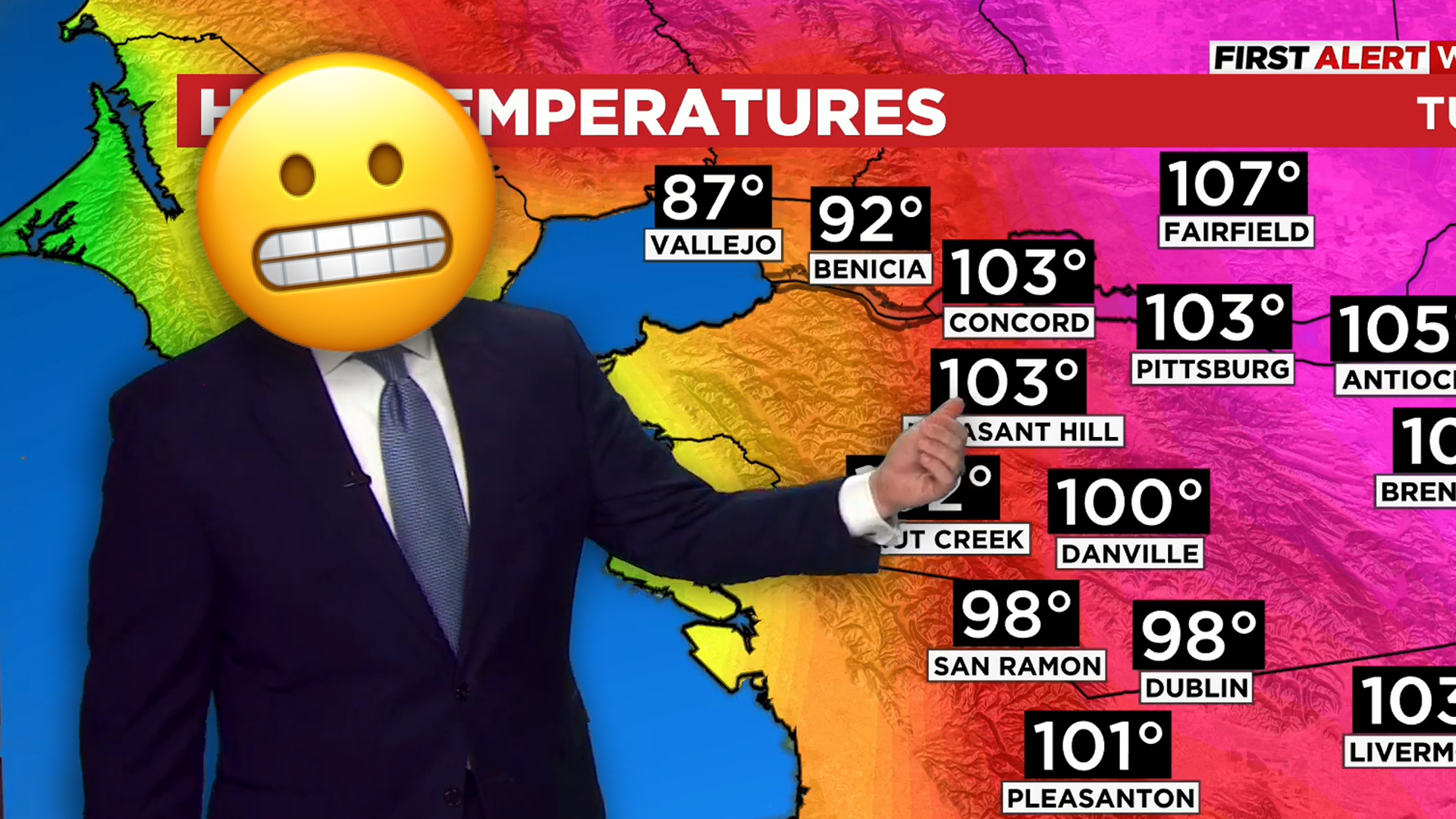In the past several years, California has endured the most extreme fires in its recorded history.
2018’s Camp Fire grew into the state’s deadliest and most destructive fire on record, devastating the towns of Paradise and Concow. Last year the state suffered the Dixie Fire, raging for months through five Northern California counties on its way to becoming the single-largest blaze in state history.
These deadly infernos are stark evidence of how vulnerable California’s communities and forests have become in the era of climate change. But warmer, dryer forests aren’t the only factor behind these so-called mega fires. Ironically, it is a lack of fire that is also playing a major role.
Two hundred years ago, someone walking through Yosemite would not have seen the densely packed forests we now associate with the Sierra Nevada.
They would have passed through broad meadows and perhaps have even been drawn to comment, as the Spanish did, on how the land appeared like a “well-tended garden.”
In fact, that is exactly what Spaniards were seeing: Indigenous people native to Yosemite and other parts of the world for millennia have used fire to promote healthy forests. Today, the wisdom of that approach is seen as one of the keys to unraveling the deadly cycle of California wildfires.
Using fire to help forests flourish
It’s easy to assume that the impenetrable forests we associate with the mountains of California have always been there. Many of the popular images of Yosemite, for example, were taken decades after federal agencies moved to suppress fires in the region and removed native tribes.
But ecological records and oral Indigenous history alike describe how fire, sparked by lightning or planned by tribes, played a vital role in shaping California’s landscape for thousands of years. A recent UC Berkeley study found that forest biomass in the Klamath Mountains region used to be approximately half of what it is now, and that burns carried out by the Karuk and Yurok tribes played a significant role in maintaining forest structure and biodiversity.
Ask the Honorable Ron W. Goode, Tribal Chairman of the North Fork Mono Tribe, what’s missing from the land and he will tell you it’s fire.
It may be a contentious subject, especially given California’s recent traumatic wildfires. “But I need to talk to you about fire,” Goode says.
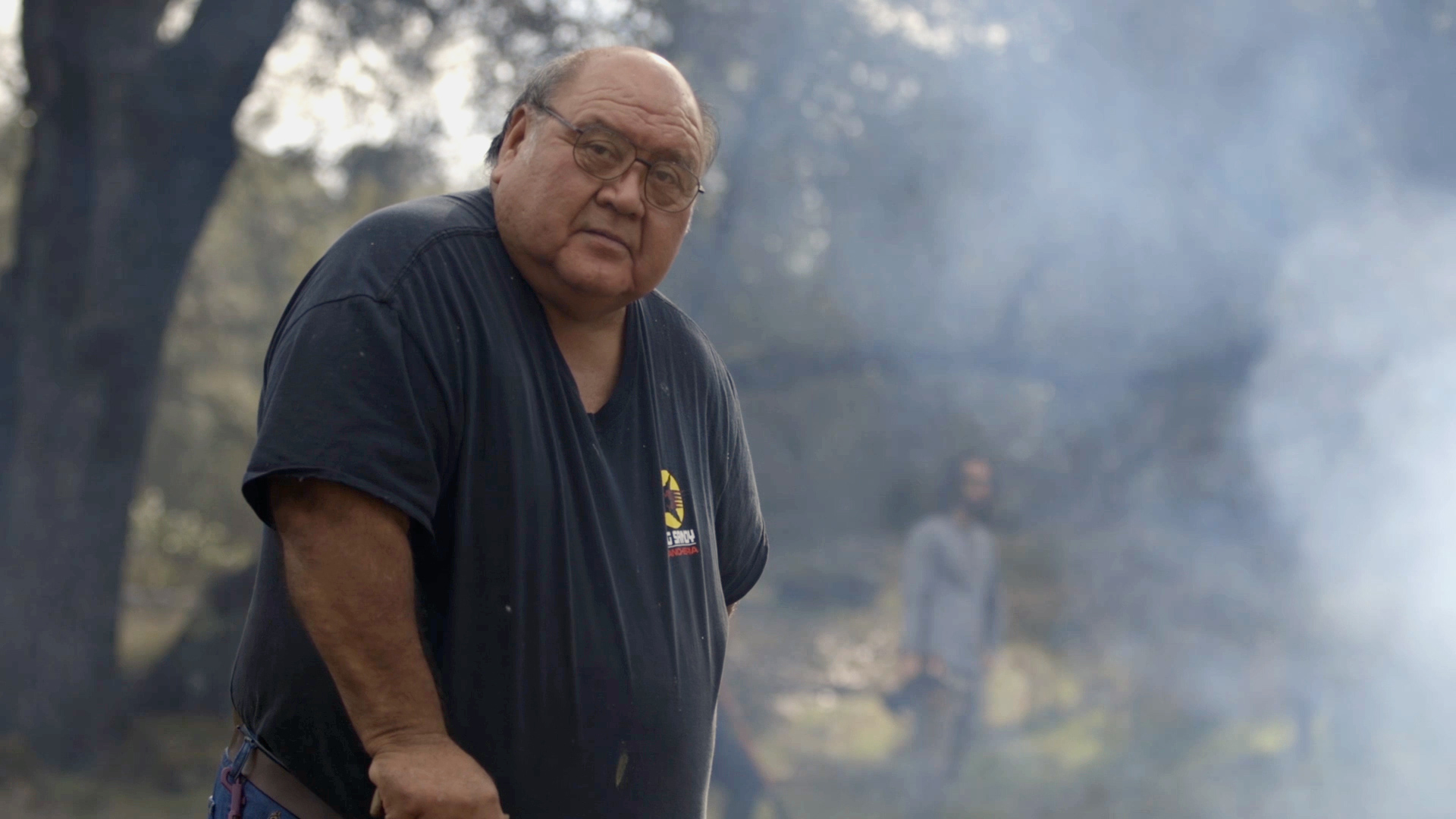
“Many of the bushes that we’re now burning haven’t actually been burned for about one hundred and twenty years,” Goode said while conducting a burn on the Jack Kirk estate in Mariposa, California. “And they’re crying. They want fire, they want to be restored.”
“When you talk to different native people from the Yosemite area, they talk about how it used to look when fire was used as a management tool,” says UC Davis professor of Native American Studies Beth Rose Middleton Manning. Her classes have worked alongside Goode and members of other local tribes to help carry out traditional Indigenous burns. “The way valleys are now being encroached upon by conifers and other species in areas that were once open.”
The landscapes tribes in California cultivated were diverse, including foothills, woodlands and forest. Goode describes how, as a result of Indigenous land management, Spaniards were able to travel for over 60 miles under a canopy of mostly water oaks, a shade tree that produces abundant acorns, and how early Euro Americans found wide open pathways into Yosemite.
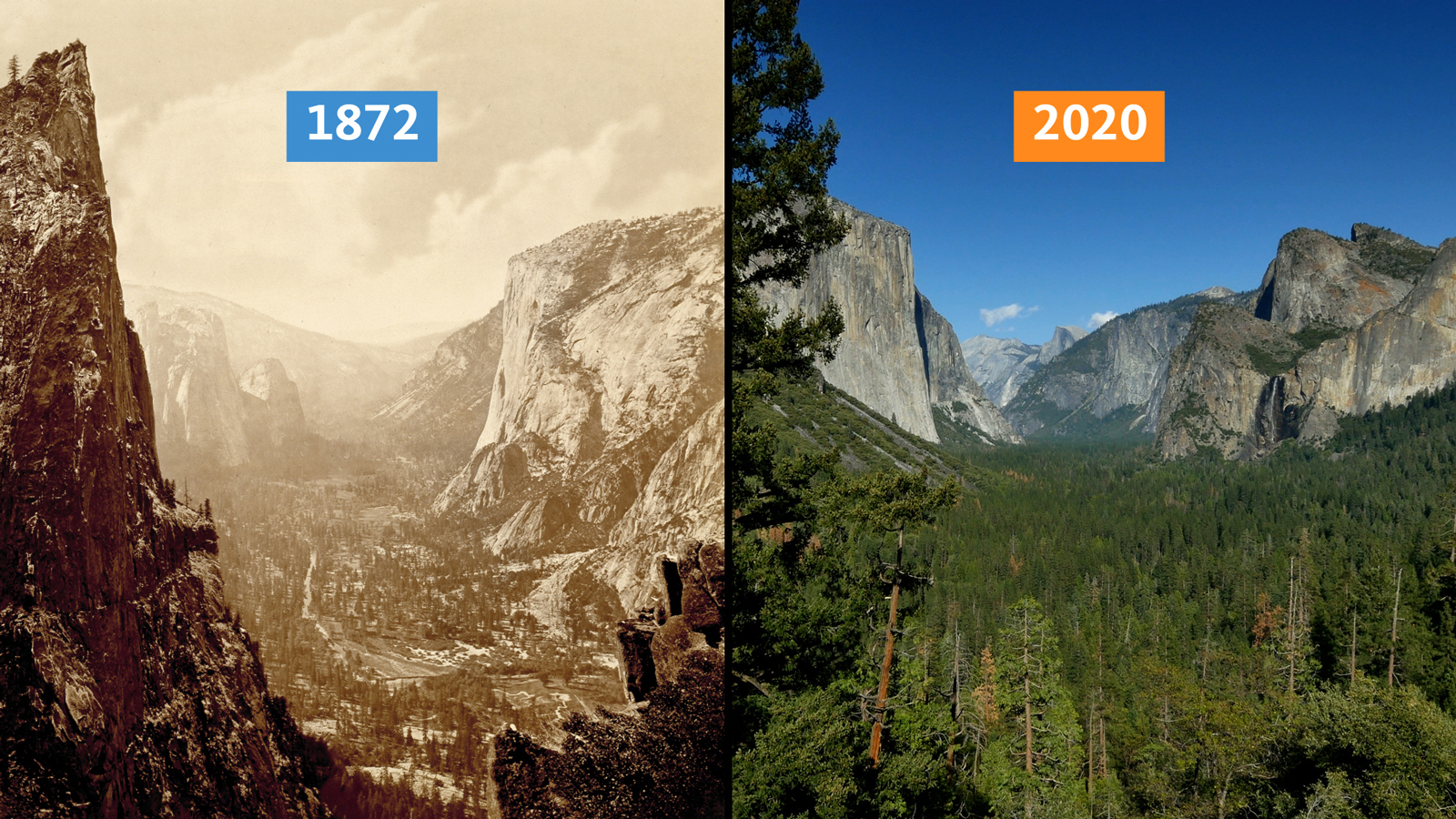
But early European settlers who set foot in California saw tribes setting fire to the land and regarded it as primitive. Strangers to the ecosystem and fire’s role within it, they suppressed the practice. In 1850, California passed the Act for the Government and Protection of Indians, which outlawed intentional burning in the newly formed state. One early U.S. forest ranger suggested people who set fire to the land should be shot.
Federal and state governments radically transformed the land in other ways as well. In many instances, tribes were forced off the lands they had been carefully maintaining. Forests were extensively logged, then replanted in dense groves, further shifting delicate balances between trees and open areas, and creating the kind of closely packed forests that can fuel massive, uncontrolled wildfires.
Goode estimates that the California canopy is now twice as dense, or more, in places that have been missing fire. “When the Indian was on the land, the canopy was 40 percent or less open,” he says. In that open space, a variety of plants, bushes, and smaller trees, like oak trees, were able to grow, as did plants still used today by native tribes for food, medicinal or cultural purposes. These varied landscapes were more resilient to fire; in today’s forests, once the crowns of the trees catch fire, a blaze spreads rapidly, using the tree canopy as a kind of deadly highway.
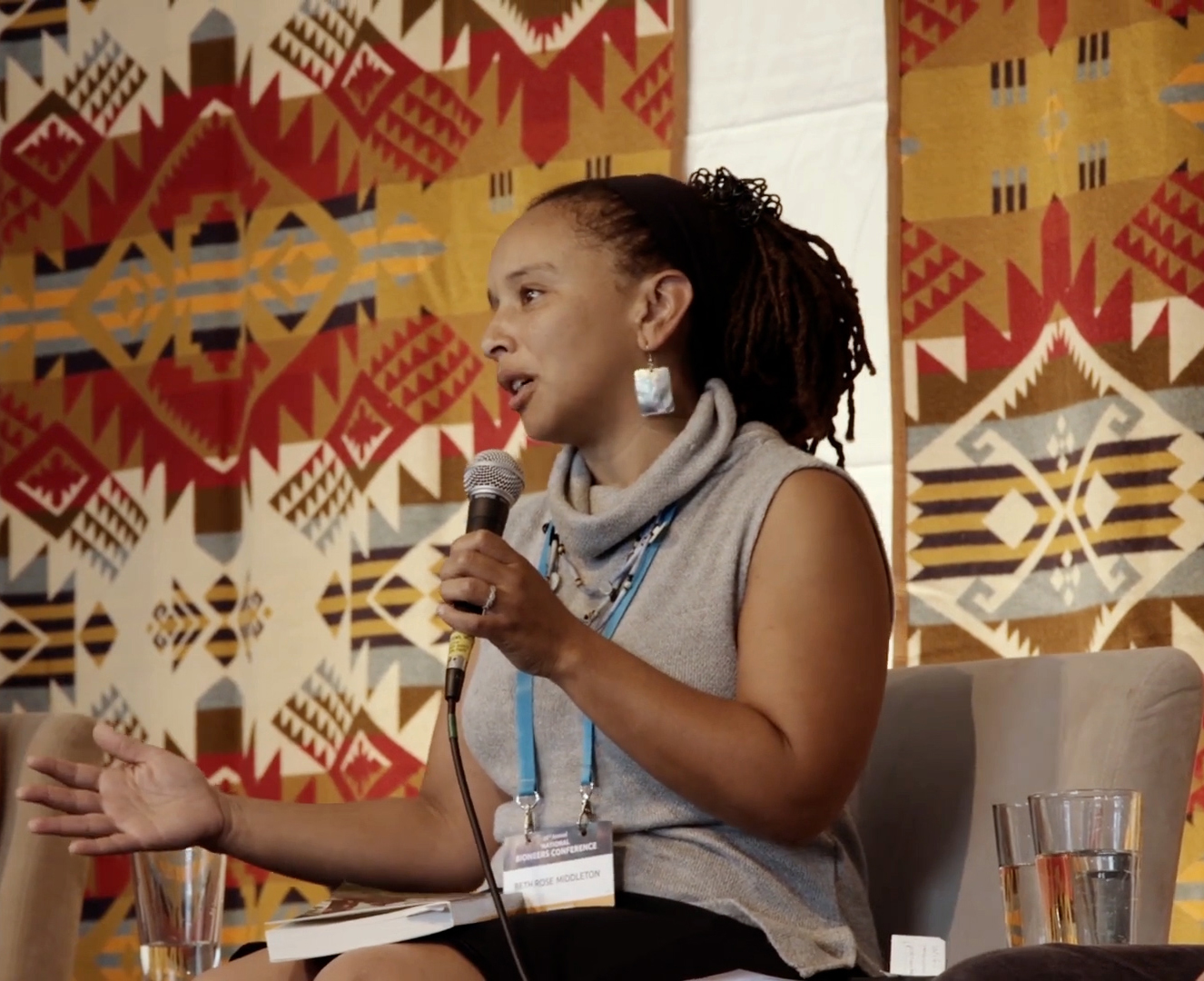
Beth Rose Middleton Manning
These tall trees, planted close together, compete with one another for sunlight and water, and prevent smaller plants below from thriving. Stressed by drought and climate change, they are vulnerable to parasitic attacks. Bark beetles have now killed as much as 5 percent of the forest in the western United States, scientists estimate. These dead trees are more fuel for wildfires, helping them spin out of control.
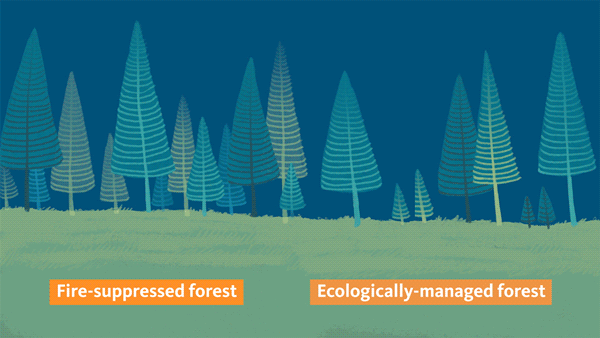
“When everything's a mess and dry and needs brushing, needs clearing, then only the big trees are the ones that are sucking up water,” Goode says. “They can reach down two meters, but cultural plants can only go down about a meter for water. Beyond that, they’re out of water. That’s when you begin to see parasites attack the bushes and the plants.
“Who grows a garden like that?” Goode asks.
“That's why the need is to come in and put fire on the land.”
Cultural burning
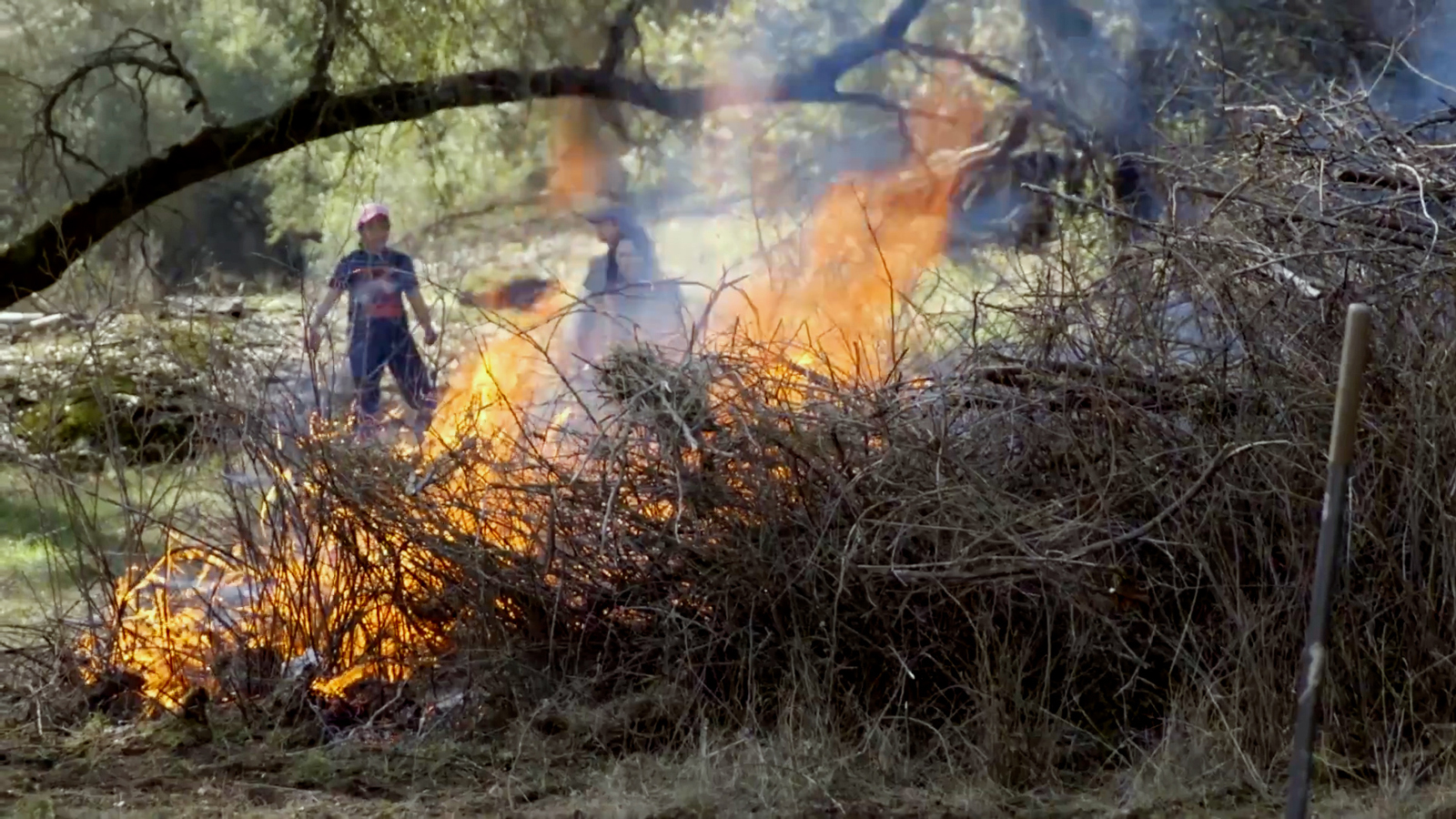
Goode has been practicing what is known as cultural burning for nearly 30 years. Cultural burns are a form of land management passed down by Indigenous tribes over thousands of years. It is called cultural burning not only because of its spiritual and cultural importance to Indigenous communities, but because the burns are designed to cultivate the biodiverse, sustainable growth that make landscapes more resilient. Goode shares the importance of the practice with educational and government institutions and teaches others, including students of UC Davis professor Middleton Manning, how to use fire to restore the land.
The restoration of that knowledge is itself sorely needed. As early as the 1940s and 1950s, some ecologists had begun to question the wisdom of fire suppression, pointing to a loss of wildlife habitat and increased severity of fires created by decades of fuel buildup.
In response to a foundational 1963 report led by UC Berkeley conservationist A. Starker Leopold, the U.S. National Park Service changed its policy in 1968 to allow lightning fires to burn within special fire management zones — usually remote regions at high elevations — where danger to human settlements was low. Forestry and park services have also shifted their approaches to include strategic use of fire to thin vulnerable areas. This practice, known as prescribed burning, is performed by fire experts under certain conditions in select areas.
Prescribed burns versus cultural burns
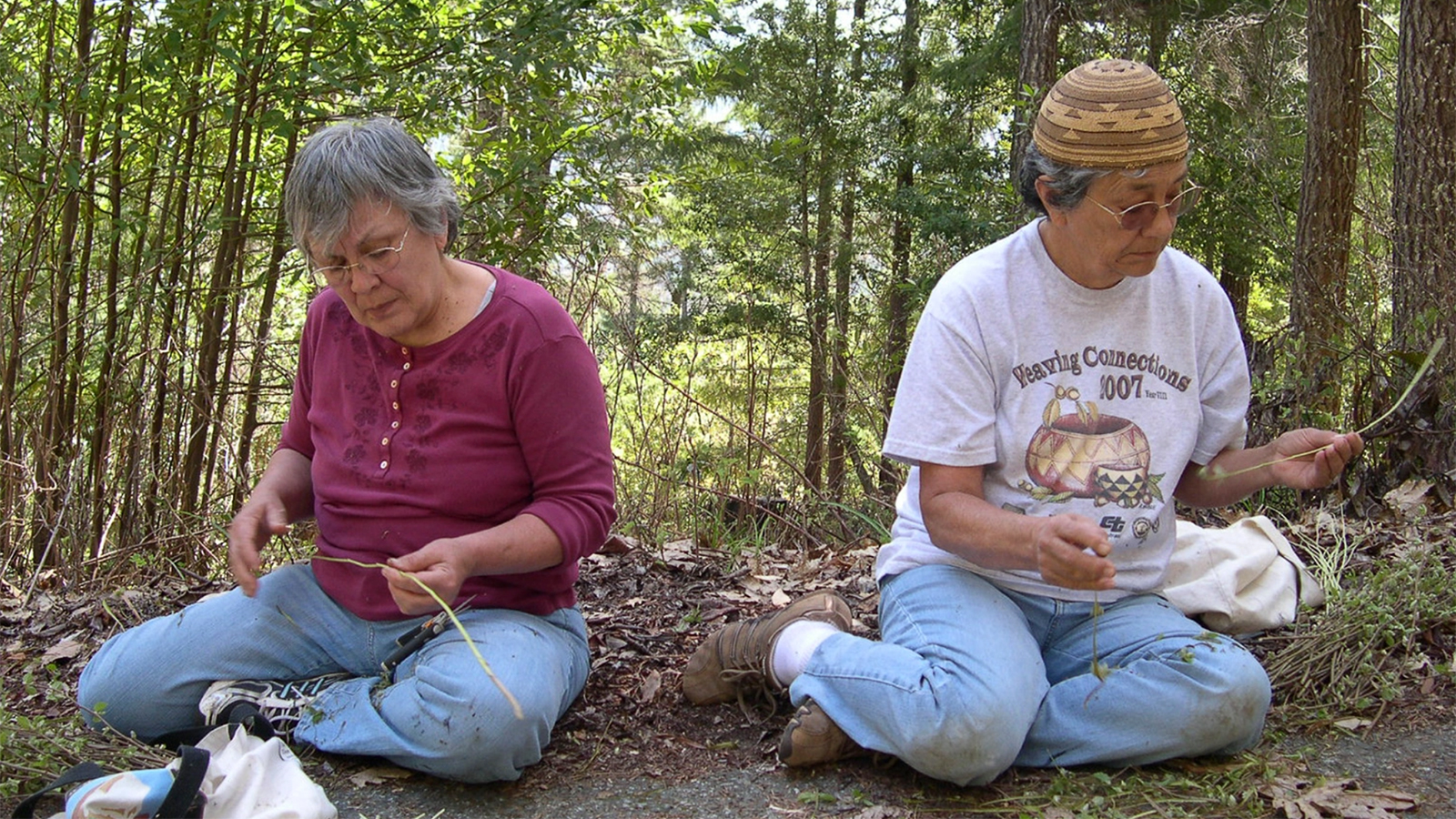
But there are important differences in philosophy and execution between prescribed burns and cultural burning in their approach to the land, Goode says.
Agencies tend to focus on acreage and fuel reduction, relying upon natural features or previous fires to control potential spread. Forestry technicians may prioritize large-scale pile burning, for example, then leave when it is done.
Indigenous cultural burns focus on what needs to be burned to revitalize the land with the intent of returning to make use of it again. Traditional baby baskets of the Yurok and Karuk Northern California tribes, for instance, are made from hazelnut shrub stems that are collected after fires. Only those types of stems are straight and strong enough to create the baskets. But in order to collect them, hazelnut shrubs must be burned, a step many agencies do not currently take.
Indigenous preparation of land for a burn can also involve promoting oak trees in place of pines, for example, creating a new food source for animals and people alike. The ecological and spiritual importance of cultural burns is written into a North Fork Mono creation story — how the Inchworm was able to retrieve the Falcon caught on a high rock by going up the rising water table created by fires put on the land by the Mono.
“Cultural burning comes back to what we are burning for, and it’s not burning for acres,” Goode says. “We're burning to restore the land, restore the resources, restore water. Bring it back to where it can reproduce on its own.”
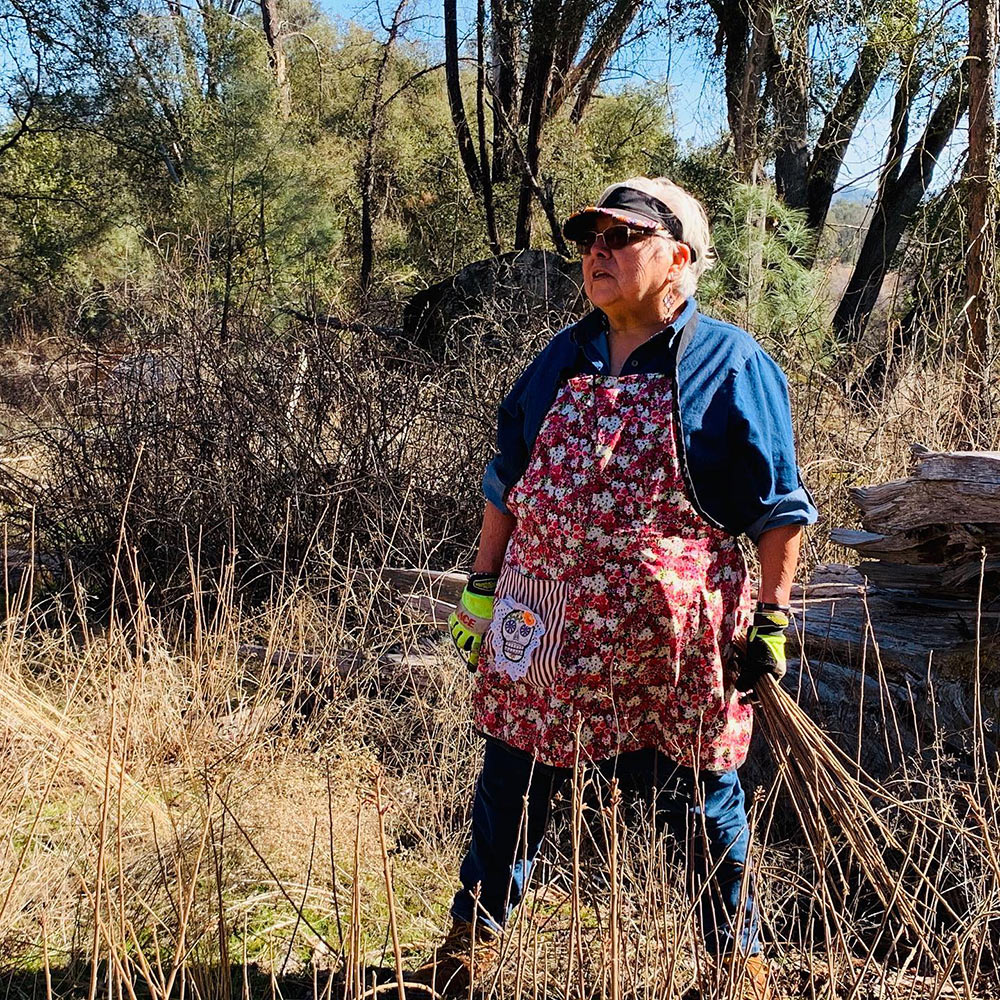
Julie Dick Tex of the Western Mono tribe collects sourberry branches for basket making in Mariposa in 2020. Read more about Tex, sourberry basketry and UC Davis’ engagement with cultural burns here.
A generational approach to burns
Another important difference between prescribed burns and cultural burns is their approach to time. The North Fork Mono Tribe puts fire on the land in a decades-long cycle. “We're burning minimally three times in 10 years,” Goode says. “Then the next 20 years, you're only going to need to burn once. That's what we call a 30-year cycle.” During the cycle, older people like Goode, now 71, train younger people on how to perform the burns correctly. Each burner performs this cycle of training and implementation and passes it onto the next.
“We thrive on the land, not survive,” Goode says. “Indians didn't ‘survive.’ We look to our grandchildren's grandchildren, seven generations, basically 120 years down the road, that's where we look. So the decisions that we make and our practices that we do today need to affect generations down the road.”
This way of thinking and training others is difficult to translate into agency land management environments that are constrained by budget cycles, employee retention and other red tape issues that constrain the tribes themselves.
Nature, on the other hand, doesn’t wait for a permit — and so the many varieties of berries, brush, buds and trees that each play a role in a forest’s health languish, sometimes with deadly consequences.
Supporting the practice
While some private estates allow for cultural burning, there are much larger swaths of land that could benefit from the careful, generational stewardship of Indigenous peoples. A recent Stanford-led study with the U.S. Forest Service in collaboration with the Yurok and Karuk tribes proposed further expanding cultural burns across more than a million acres of federal and tribal lands, with little cost to the Forest Service itself.
University of California Cooperative Extension fire advisor and Northern California Prescribed Fire Council director Lenya N. Quinn-Davidson suggests we embrace this approach to fire.
“There is so much to learn from cultural practitioners — not just about traditions and techniques, but also about stewardship and connectedness,” she says. “Fire is a reflection of culture, and the kinds of fires we’ve been experiencing in California are a projection of our own disconnection and imbalance. It’s time to reclaim the balance, rebuild the relationship. Cultural practitioners can help show us how.”
“Tribal members describe intensive landscape stewardship that they were engaged in in the past, which included low intensity burning, coppicing or trimming plants. And all of the work that they did had positive effects on opening up the forest, raising the water table,” Middleton Manning says. “There was no downside.”
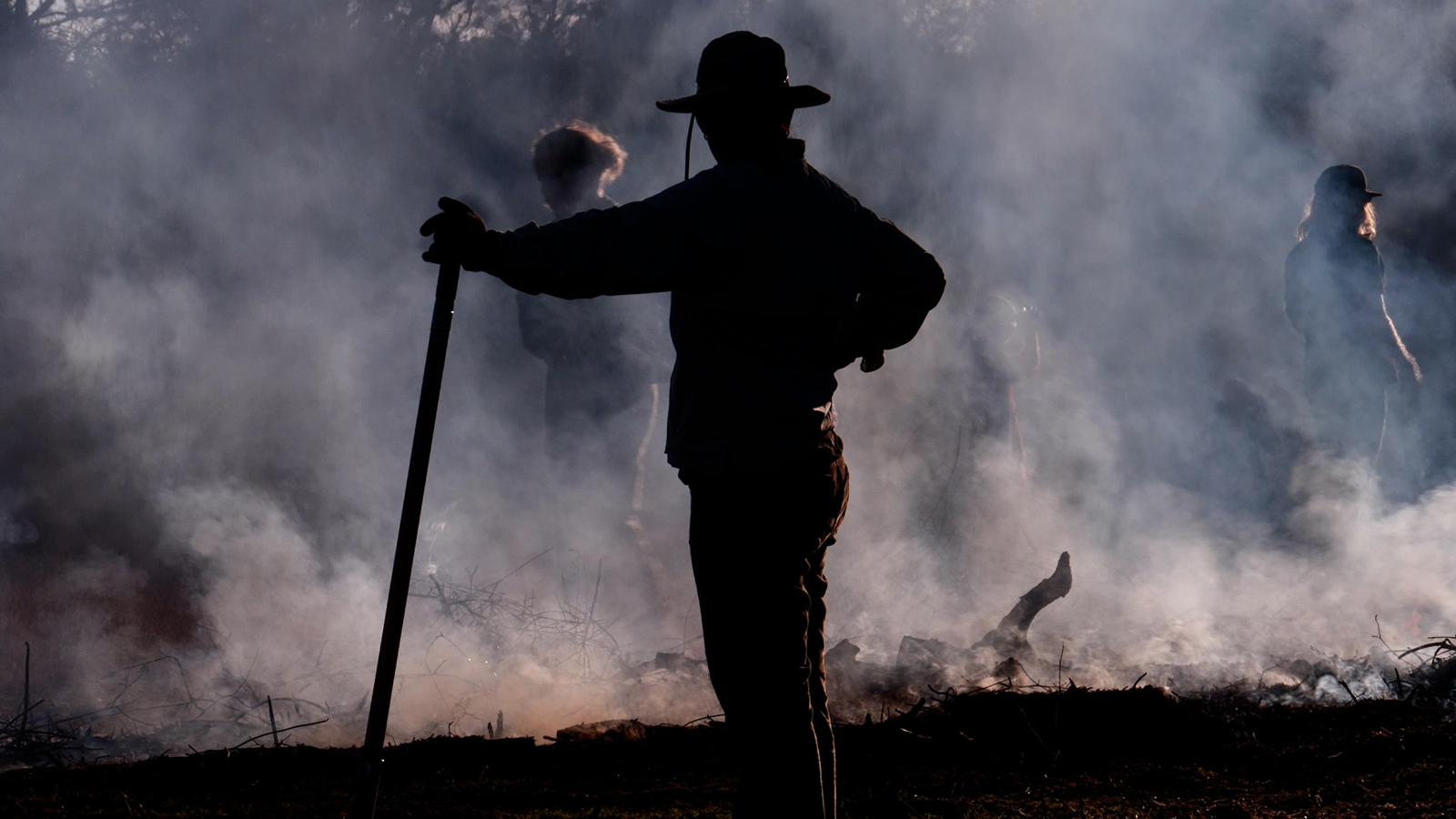
A recent UC Berkeley study of Yosemite’s Illilouette Creek Basin — a 60-square-mile area where lightning-created fires have been allowed to take their course over the past half-century — also speaks to fire’s healing effects. Here the landscape looks something like it may have looked 200 years ago: A mixture of grassland, shrubland and meadow filled with abundant wildflowers and boosted plant and pollinator diversity.
“I think climate change is no more than 20 to 25 percent responsible for our current fire problems in the state, and most of it is due to the way our forests are,” said senior study author Scott Stephens in a recent interview. “Illilouette Basin is one of the few places in the state that actually provides that information, because there is no evidence of changes in fire size or in the severity of fires that burn in the area. So, even though the ecosystem is being impacted by climate change, its feedbacks are so profound that it’s not changing the fire regime at all.”
Setting up the structure to support the practice of cultural burns in a 21st century climate of catastrophic fires is tricky, however. Land agreements can be tenuous, and state and federal agencies are still learning how to delegate stewardship of the land, and its burning, to the tribes that originally lived on it.
“The Forest Service or another agency may say, ‘OK, we hear you. This plant needs burning in order to be healthy so you can continue your tradition,’” Middleton Manning says. “‘But we can't let you burn because you don't have the certification. So our people have to burn and you can watch.’ I think that is enormously frustrating for Indigenous people. And I know Ron Goode and others have advocated strongly for recognizing Indigenous expertise in Indigenous knowledge.”
But some positive changes have been made. A new California law, effective January 1, 2022, has affirmed the right to cultural burns, reducing the layers of liability and permission needed to set “good fire” on the land.
Yosemite itself is in the process of welcoming a return to cultural fire under the oaks in the Valley, Middleton Manning notes, led in part by National Park Service cultural ecologist Irene Vasquez, a UC Santa Cruz alum and Southern Sierra Miwuk and Paiute tribal member.
And there’s a lot of really exciting stewardship and restoration projects happening on lands held or managed by native land trusts, Middleton Manning says, encompassing practices from pile burning to replanting native seeds, that bring together several generations of tribal communities.
These people, and other lifeforms essential to the ecological balance, can return after the cultural burns and enjoy the fruits of their work.
During a cultural burn shared with one of Middleton Manning’s classes, Goode, tribal members and students burned three-leaf sumac that had been attacked by lichen and was dying. In need of new growth, it was unable to produce sticks for basketry or berries for food and medicine.
“When we burn it, a new crop will start to come up in a few months,” Goode said. “We should even be able to harvest by July or August from the very bush that we're burning in the back.”
And so they did — fulfilling a cycle that has shaped California for thousands of years.
Funding for the cultural burn workshops described in this story provided by The Southwest Climate Adaptation Science Center and the Yocha Dehe Wintun Nation via the Yocha Dehe Endowed Chair in California Indian Studies, housed in the Department of Native American Studies at UC Davis. Middleton Manning holds this chair.
